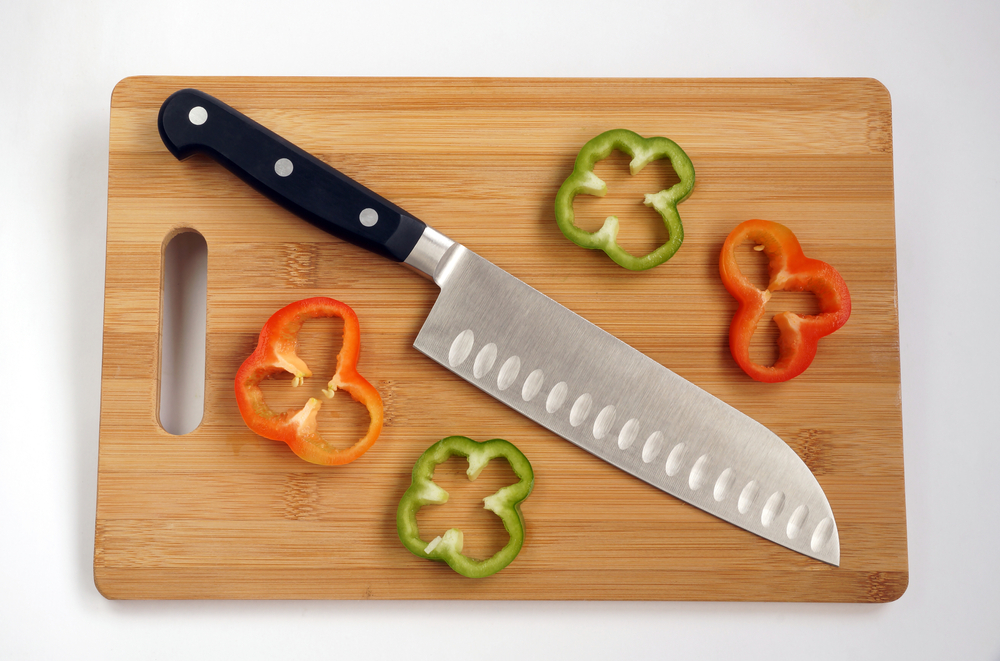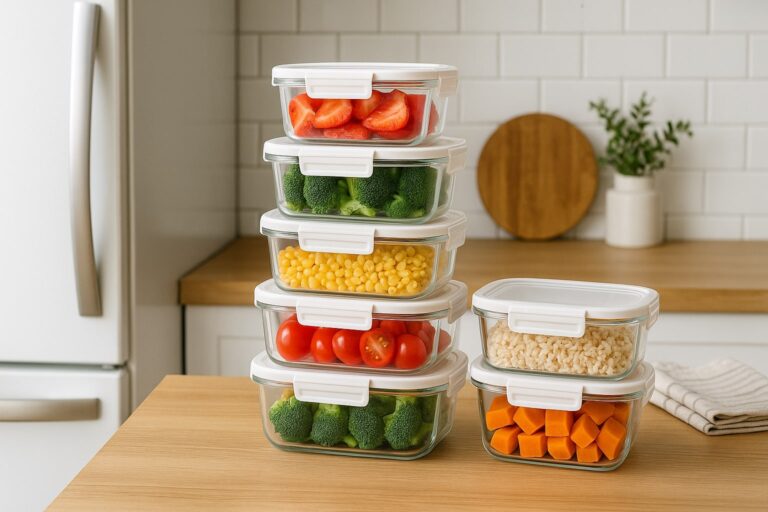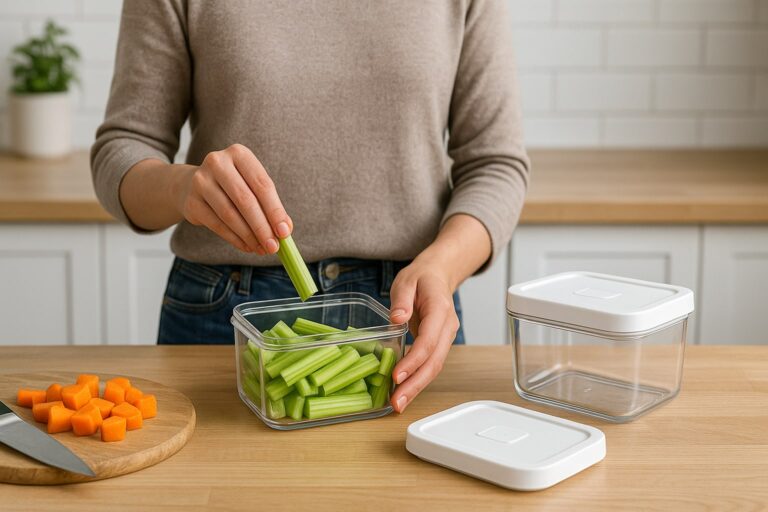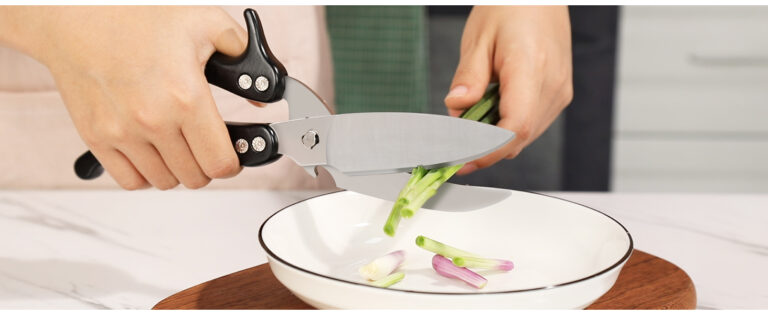Santoku knives gained popularity in the early 2000s. It was when famous television personality and celebrity cook Rachael Ray said on Television that she loved Santoku knives. That day and now, the santoku knife set is right behind the chef knives in sales figures.
Santoku means “three uses” in Japanese. According to their definition, a perfect knife should mince, dice, and slice with impeccable precision. Santoku knives are a part of such a collection.
Today, we will explain why the Santoku knife is the ideal choice for chefs.
Santoku knife: What is it used for?
Santoku Bocho knives, also known as Santoku knives, are used for three purposes: dicing, slicing, and mincing. This knife features a distinctive, rounded tip. Unlike chef knives, they are shorter in size and no longer than 7 inches. Additionally, the newer models of Santoku are also curved.
Santoku is the evolution of the traditional Japanese vegetable cutting knife, featuring a rectangular blade. These knives are friendlier to use compared to other chef knives. Japanese created these knives in the mid-20th century, after World War II, when the masses began to eat beef. Cuts made with these knives are thin yet lightweight, thanks to their curved blade shape.
Santoku Knife Vs. Chef Knife
There are many similarities between Santoku and Chef knives. However, we will now discuss the differences.
➡️ Blade:
The primary difference between the two knives lies in their blades. The chef’s knife has a sharper point, whereas Santoku is more rounded at the spine. Let us tell you that a chef’s knife has a thicker spine than the Santoku. This difference also indicates the differences between the usage of a Santoku and a chef’s knife.
➡️ Less Force Required:
The Chef’s knife is sturdier than a Santoku. Moreover, it works great on tough foods like melons or those with smaller bones. In contrast, Santoku is ideal for food that requires less force.
➡️ Weight:
The weight is also a noticeable difference between the two knives. A chef’s knife is heavier as it has to go through tougher foods. Since the Santoku primary style is up and forward motion, you want it to be lighter.
➡️ Profile:
Unlike a chef’s knife, Santoku has a straighter profile as it is lighter, thinner, and sharper at a lower angle. It will have a sharper performance than a chef’s knife. Home cooks often receive pre-cut meat and tough foods, making the Santoku ideal for home use. In comparison, chef knives are designed for tougher foods that require more pressure and technique.
➡️ Limitation:
The limitation of the Santoku is its length, which is usually 7 inches or shorter. This situation is not ideal for professional cooks. Most Santoku knives feature Grantons to prevent food from sticking to the edges of the blade.
Why Should You Use Santoku Knife?
Using a Santoku knife depends entirely on one’s personal preferences. However, here are some of the reasons why you should use them. Generally, Western-style chef’s knives have curved bellies. That turns them out more suitable for rocking-style cuts, making them ideal for finely mincing garlic or herbs, etc.
Moreover, Santoku knives tend to have a straighter edge. You have a longer, more effective cutting surface for straight-up and down slicing and dicing. The broader profile near the tip makes it easy for users to scoop stuff off a cutting board. Another consideration is that some Japanese knives are sharpened asymmetrically, with different angles on each side of the blade.
If you are left-handed or sharpen the blade yourself (or have it sharpened by a less-than-trusted professional), you should reconsider purchasing a Santoku.
Besides;
✅ If you have small hands, a Santoku knife is best for you.
✅ Santoku should be your choice if you are looking for a lightweight, efficient knife.
✅ The thinner blade ensures fine cutting and lessens the chances of crushing food.
What to Look for in a Santoku Knife?
We hope that, up until now, you are convinced to acquire a Santoku knife. If yes, this is what you should look for in a Santoku knife:
➡️ Sharpness:
A santoku knife should be sharp when you take it out of the packaging. Home cooks prefer to have a sharp knife without giving any final touches to the product. It is one of the basic elements that home cooks look for in a perfect knife.
➡️ High Carbon Steel Build:
High carbon steel provides extra strength to the knife. Look for the one that has been through the forging process.
➡️ Tall Blade:
Tall blades help make thin slices of meat and are also used to transport food that is already cut to cookware or a serving dish.
➡️ Granton Edges:
The Granton edges prevent food from clinging to the edges, thereby reducing cutting time.
➡️ Shun Handle:
If you are already in the culinary field, you would know what a shun handle means. In Santoku, the blade is forged with Damascus steel and features a Tsuchime finish. Moreover, the pakkawood handle is the cherry on top. It fits perfectly in your hand.
Benefits of Using Chef Knives:
✅ Let’s have a look at a few potential advantages of using Chef knives.
✅ They are versatile and would be your perfect prep assistant.
✅ Being lightweight, they are best for quick cutting.
✅ Santoku can effectively handle boneless meat, fish, fruits, and vegetables.
✅ As durable knives, they remain your cooking partner for years if you take care of them.
✅ Further, they are easy to use, and you can easily get used to them.
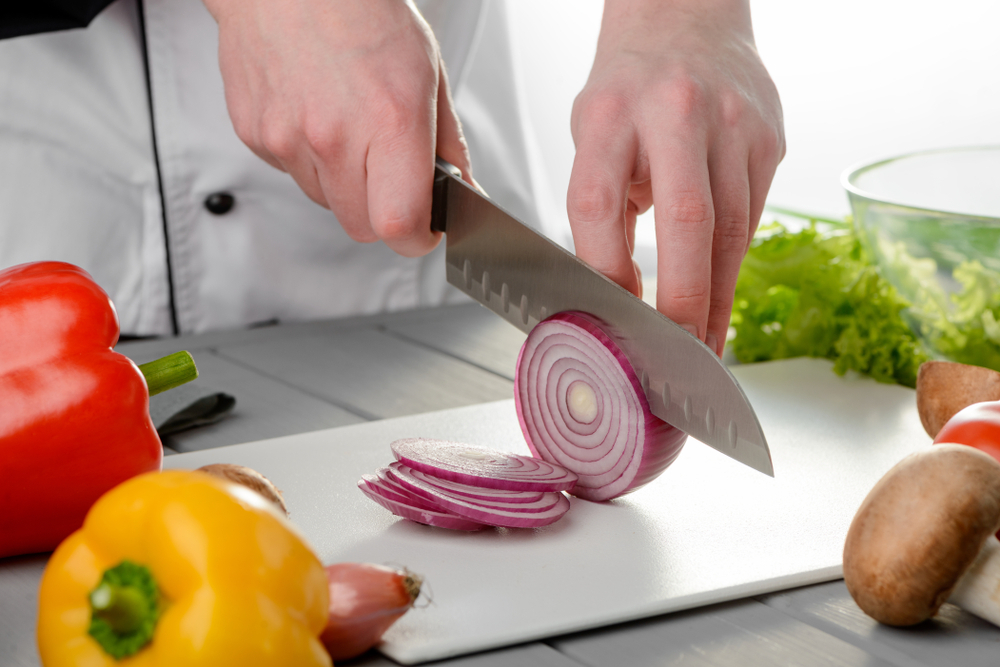
Popular Uses of Santoku Knife:
The Santoku knife is used for;
✅ Dicing, chopping, or slicing plant-based food
✅ Cutting boneless meat
✅ Slicing cheese
✅ Mincing hers and meat
✅ Finely cutting or thinning seafood, vegetables, or meat
Should I Buy Chef Knife or Santoku Knife or Both?
Both the chef’s knife and the Santoku knife have their market and uses. Additionally, they serve different purposes. We recommend you grab both to make your life easier in the kitchen. Though if you are a home cook and can purchase only one at the moment, Santoku is ideal for you.
It excels in all cutting tasks except for bones and tough materials. Moreover, if you are looking for a more affordable option in the Santoku collection, we recommend grabbing a Wusthof Classic chef knife. You can get it from your local kitchen store or Amazon.
What Size Santoku Knife is Best?
The standard size blade in Japan is 14 cm (5.5 inches). The Santoku blades range from 5 to 7 inches. It depends on the chef’s preferences to choose the perfect blade size.
Moreover, the height of the chef or cook also corresponds to the size of the blade. A 7-inch Santoku is best for dicing, but make your purchase depending on what size you can hold and use comfortably.
Frequently Asked Questions
🙋1: What is the difference between a Santoku knife and a chef’s knife?
The basic difference is in design. Santoku is used in an up and forward motion, whereas the chef’s knife moves in a rocking motion. Unlike chef knives, Santoku knives are lighter in weight and have a thin blade. In comparison to chef knives, Santoku knives are smaller and more compact.
🙋2: What makes Santoku knives stand out?
- Unique grip design.
- Granton edges.
- Self-sharpening features.
- Storage sheath.
- Full tang.
🙋3: Why do Santoku knives have Grantons?
The Grantons prevent sticky food from clinging to the edges of the knife while cutting.
🙋4: Which is the best Santoku Knife?
The Top Ten Santoku Knives are:
- Global G-48 —- $129.95
- Shun Premier — $189.95
- Victorinox Rosewood — $45.07
- Wusthof 483 Classic — $85
- Yaxell Gou SG2 — $299.95
- Zwilling J.A Henckels Professional — $70.84
- Imarku Chef Knife — $39.99
- Dalstrong Chef Knife — $69.99
- Paudin Carving Chef Knife — $28.99
- Zelite Infinity Santoku Knife — $95.19
Wrapping Up
Santoku has been the talk of the town since 2000 and till now has built its market. It is lightweight, has high-quality construction, and is best for home cooks. Besides, they are also among the favorites of many professionals in the culinary field. Further, the decision to purchase a Santoku or not depends entirely on your personal preferences.
We hope you now know why the Santoku Knife is the best choice for chefs. The content includes all the relevant details you should know about Santoku knives, which can inform your decision to purchase one. Don’t forget to give us your feedback and reviews in the comments section.

